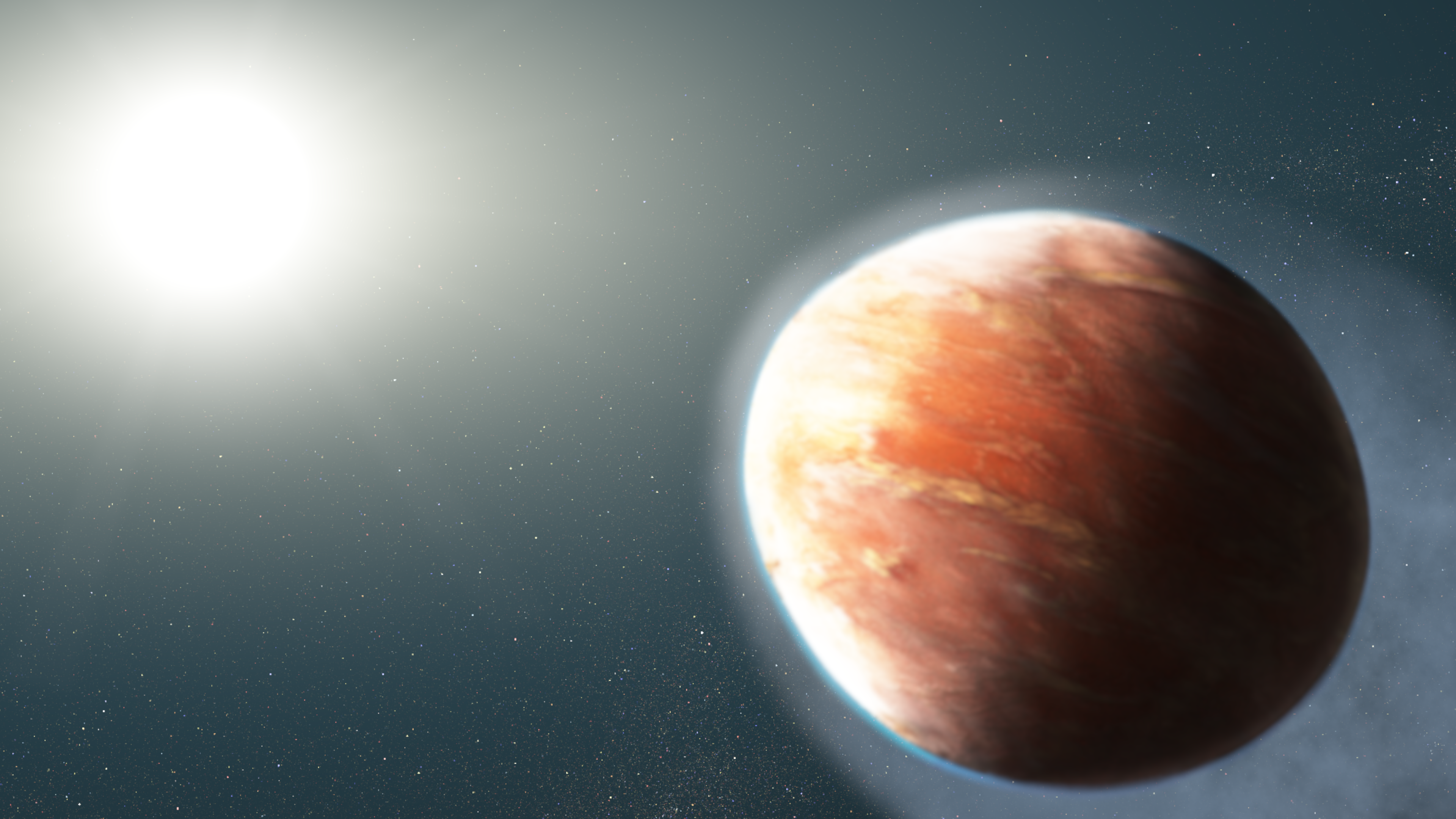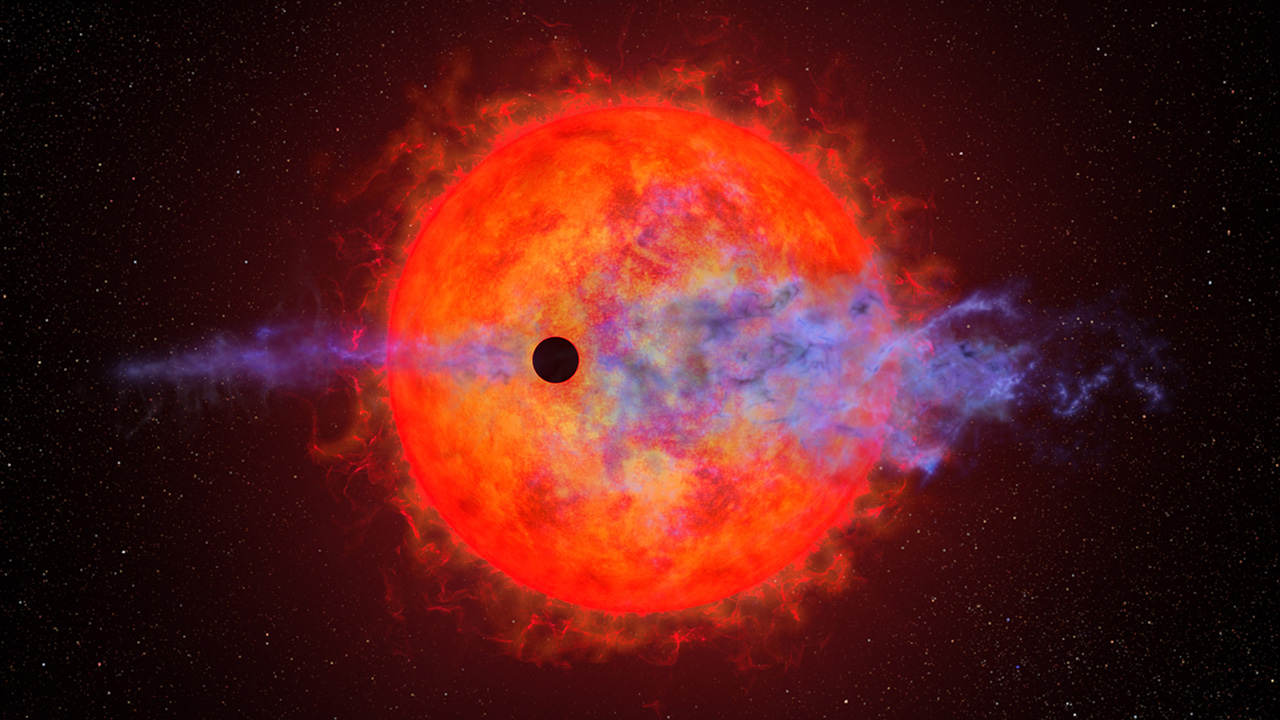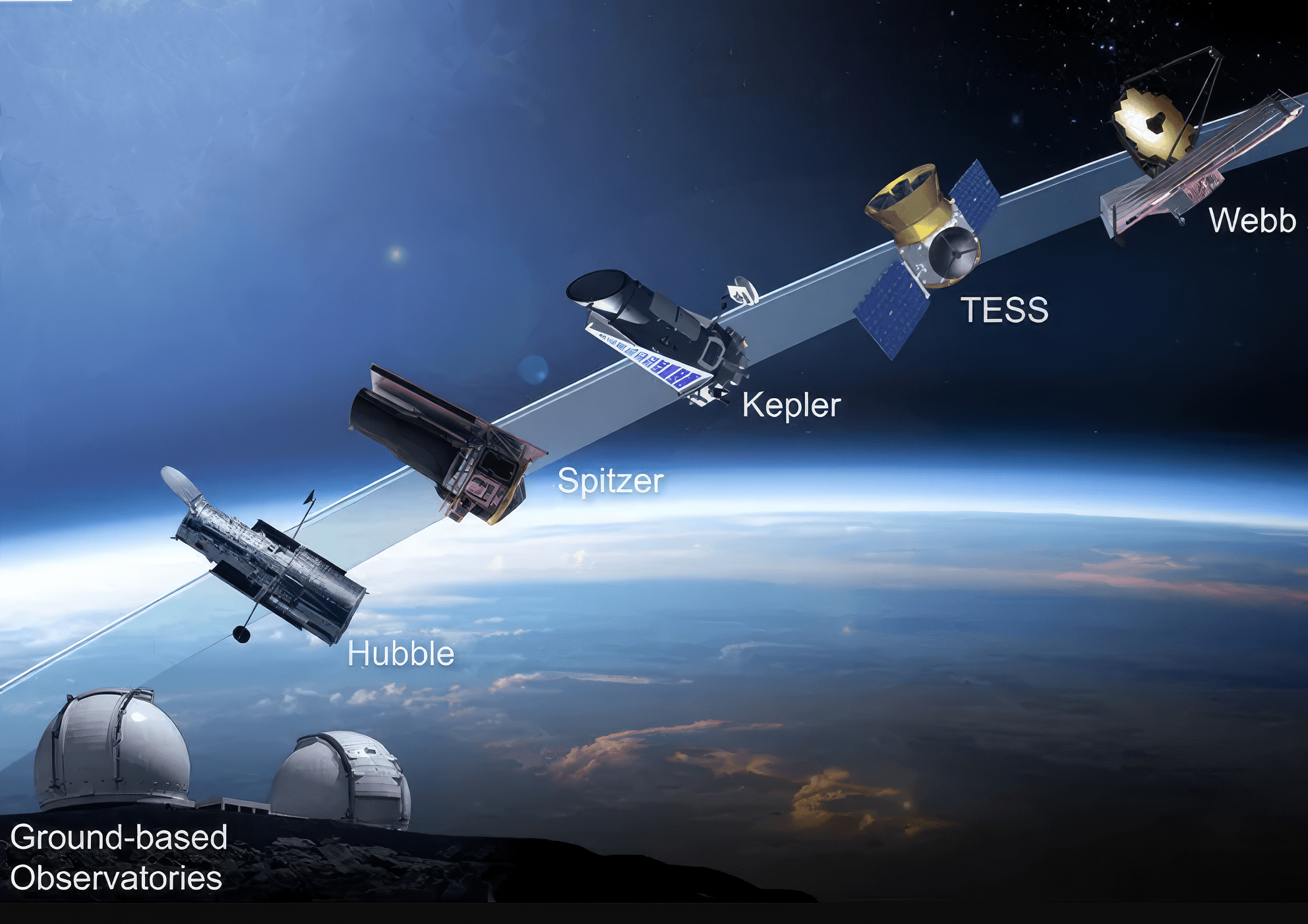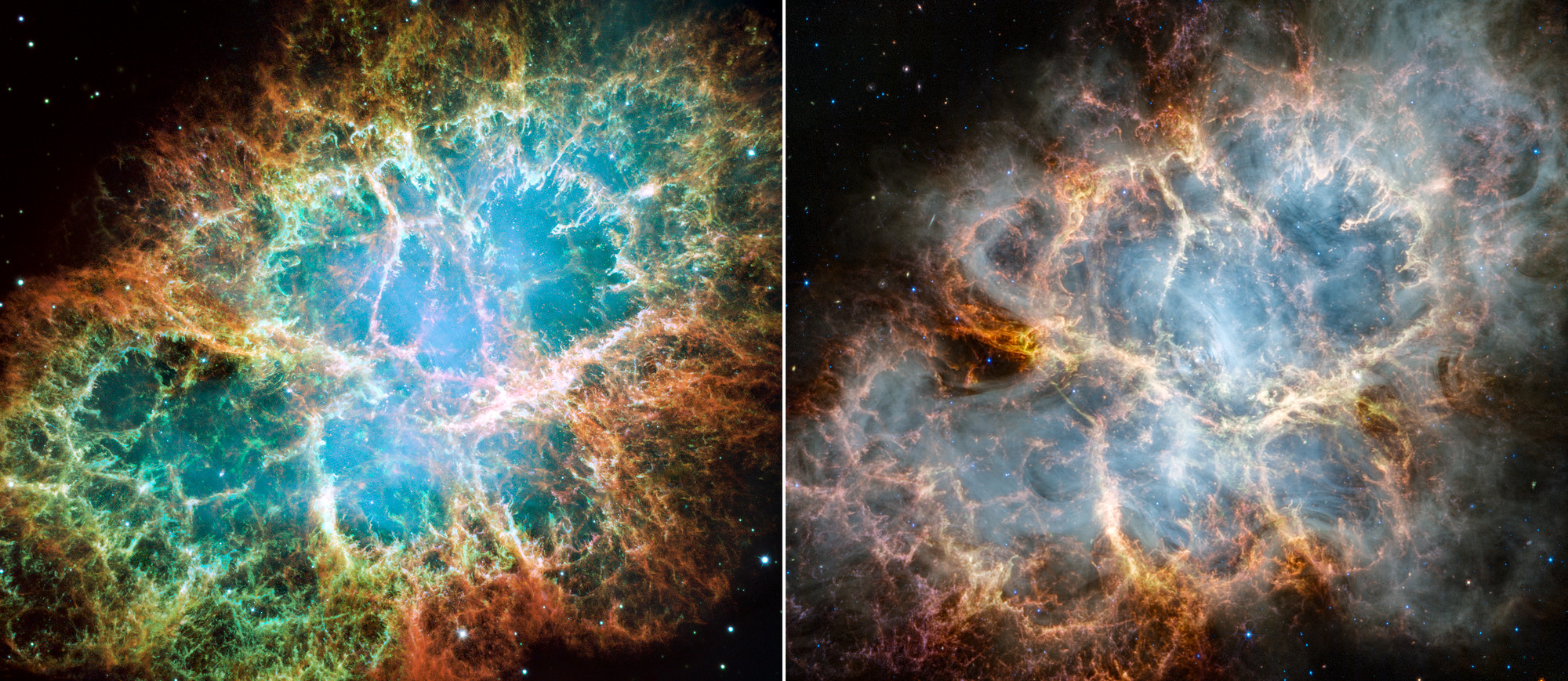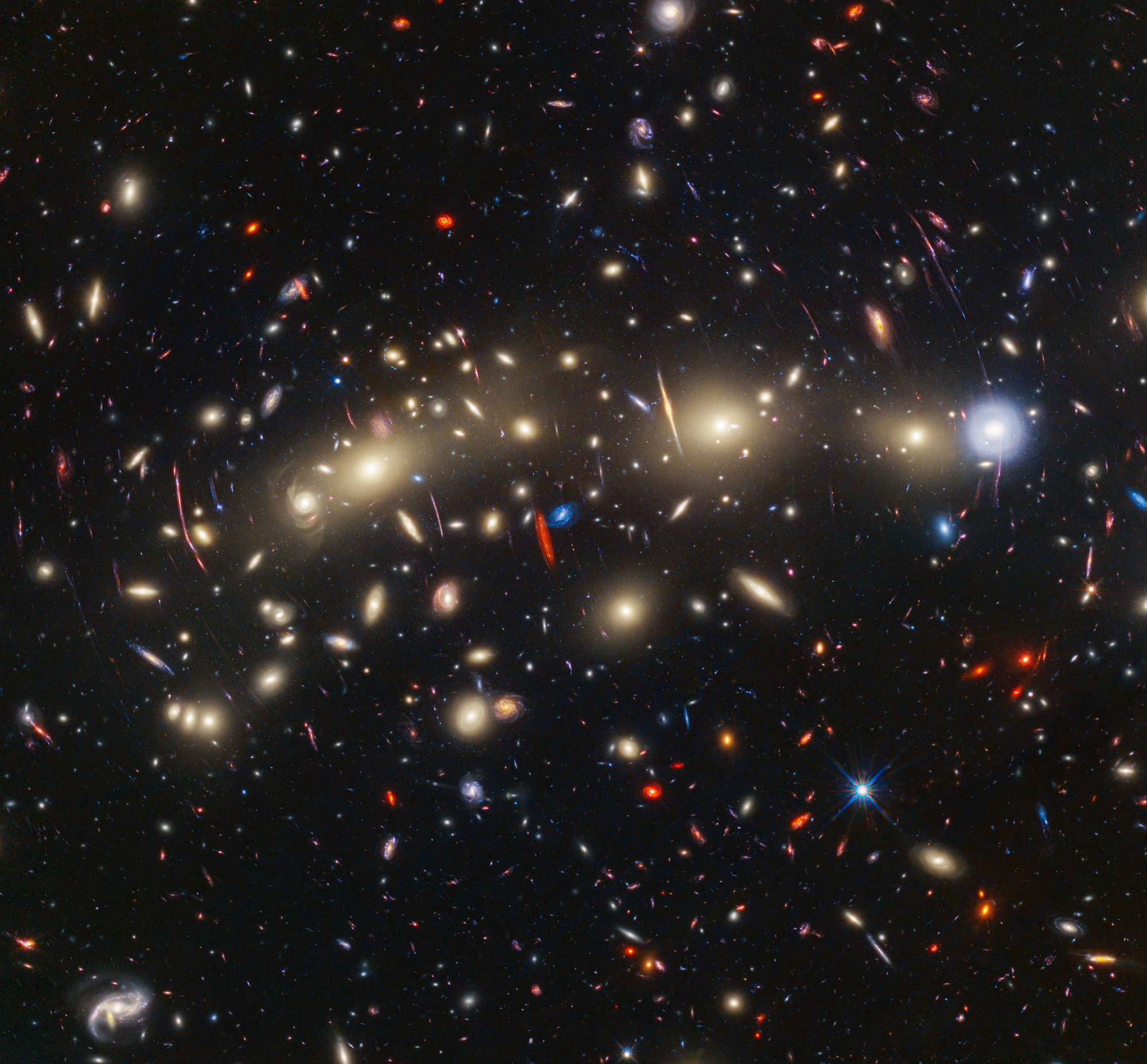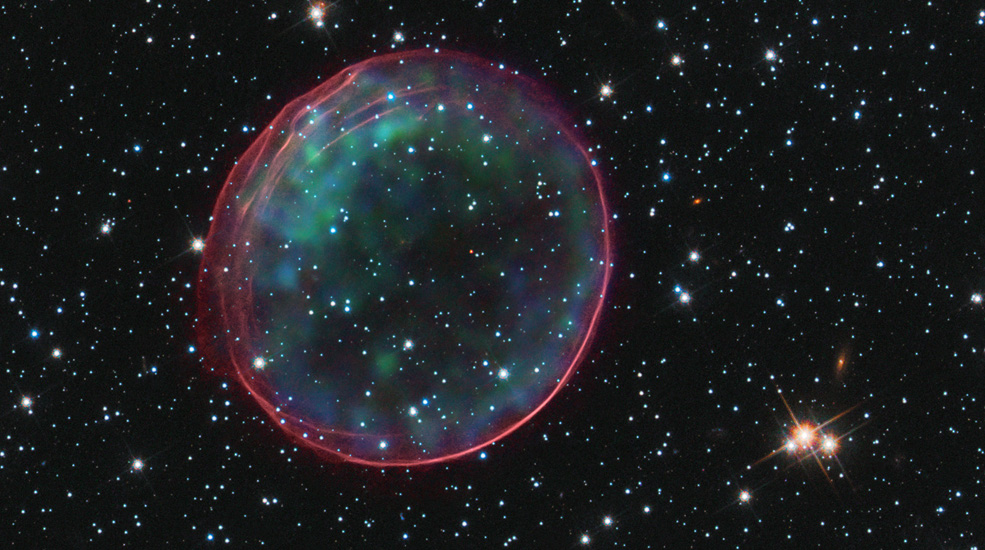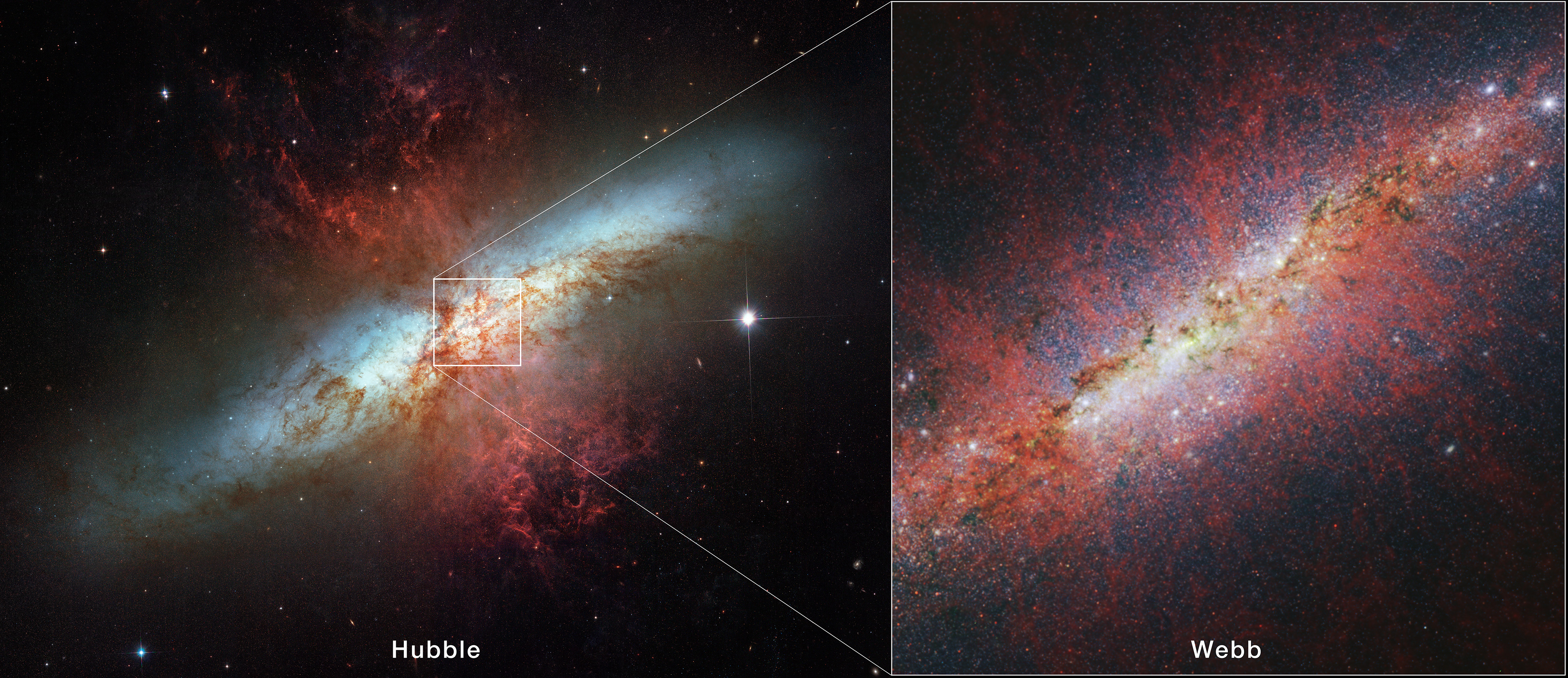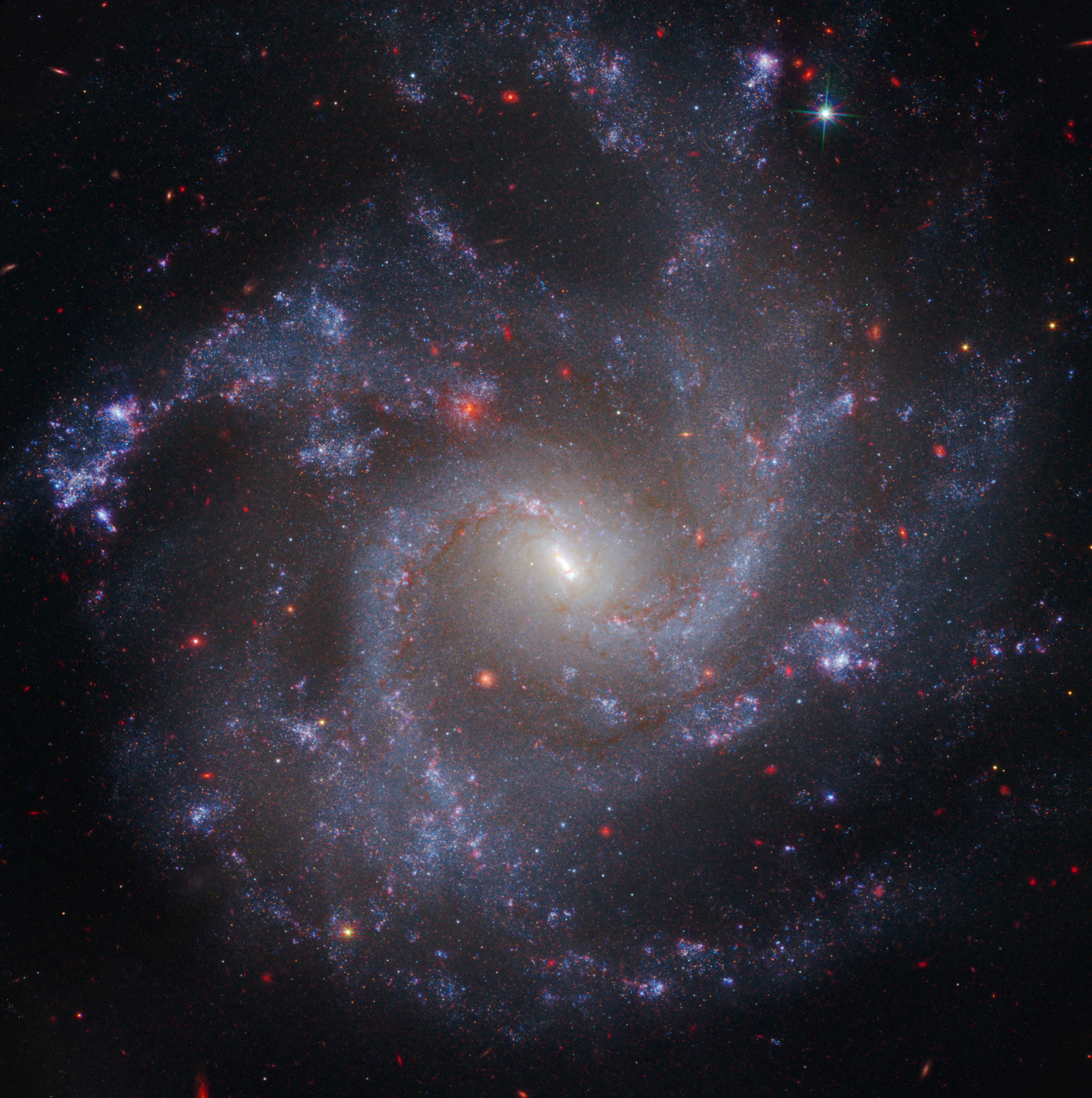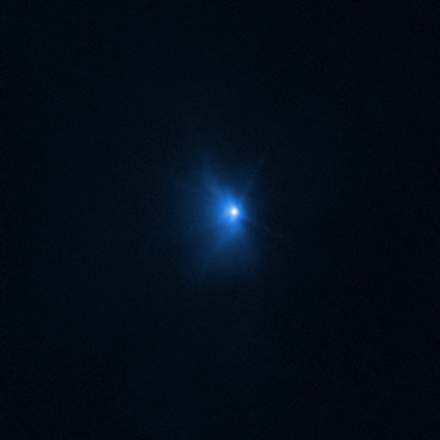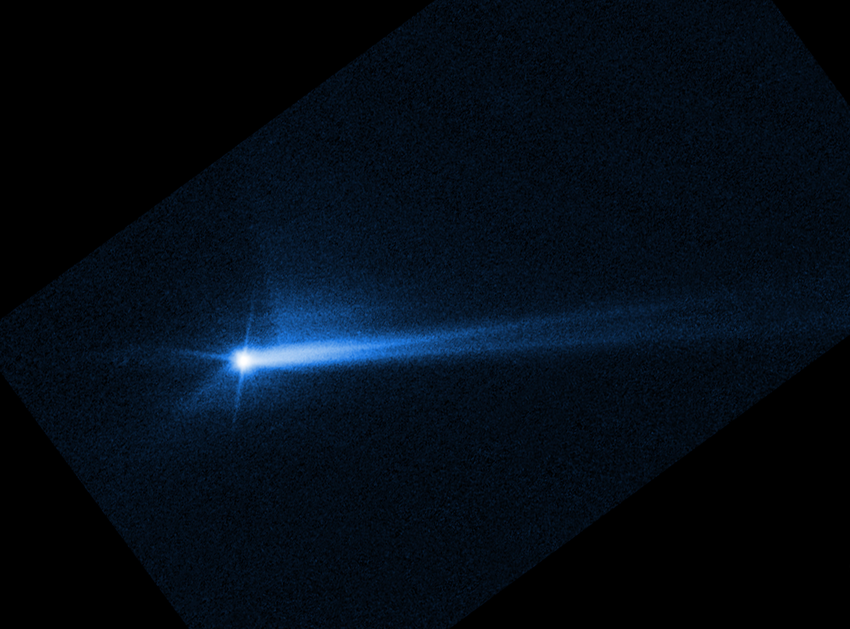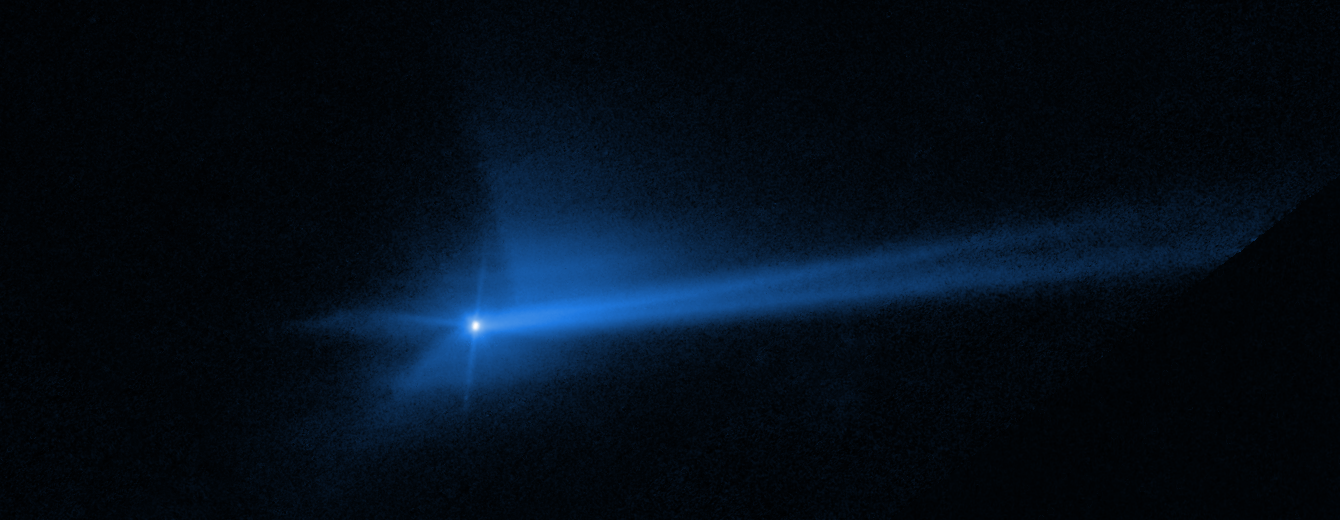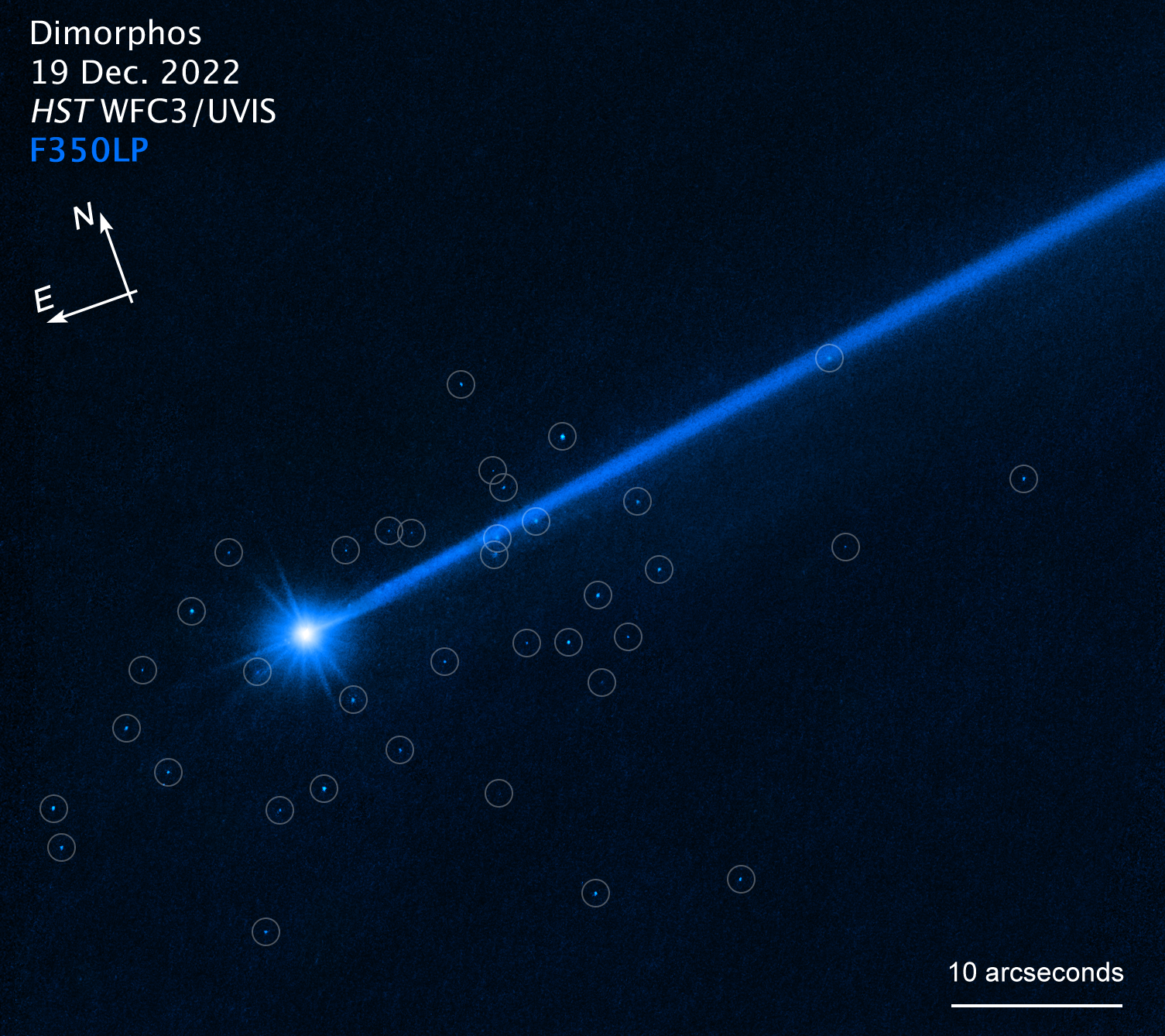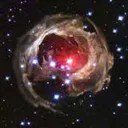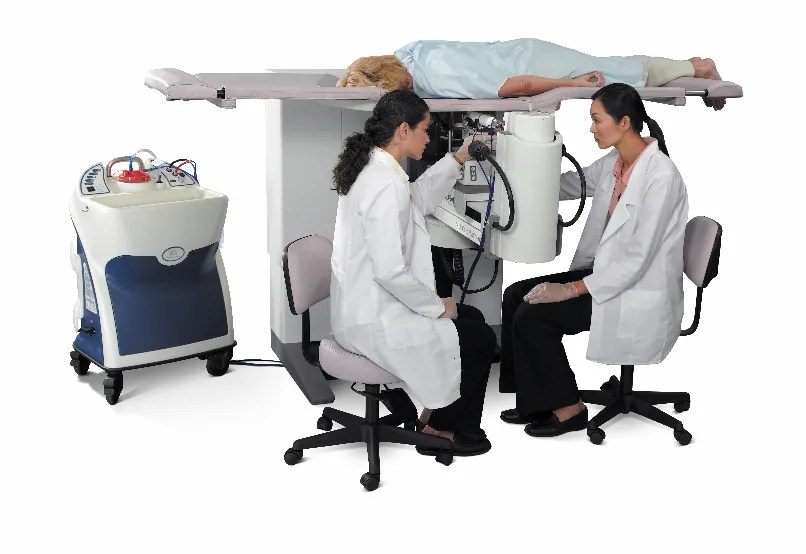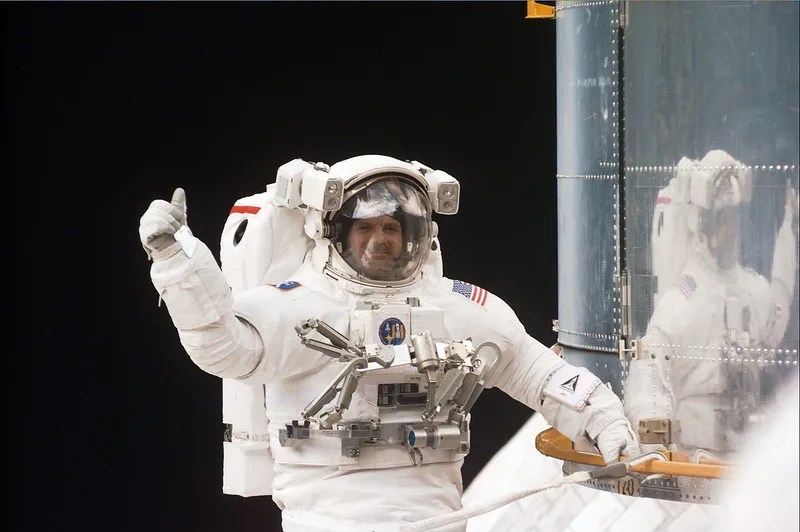Orbiting high above Earth's obscuring atmosphere, NASA's Hubble Space Telescope’s multiwavelength capabilities let it capture ultraviolet, visible, and near-infrared light. This unique ability allows astronomers to not only see a wide range of cosmic phenomena, but also lets them focus on a single phenomenon at different wavelengths. This is important, because the optical/visible light our eyes see is only a small fraction of what is available in the universe. Astronomers also use radio waves, microwaves, X-rays, gamma rays, gravity waves, and even subatomic particles like neutrinos to study the cosmos, and each one requires different instrumentation. No one telescope can see them all.
In that respect, Hubble is one in a fleet of telescopes across the globe and in space that study the universe, and it often collaborates with these other observatories to make discoveries. Those collaborations take many forms, from formal agreements to community-wide observations of an event.
Hubble observation time is generally proposed and won through the standard Hubble cyclical call for proposals. Proposals can request observing time on the James Webb Space Telescope, Chandra X-ray Observatory, the Transiting Exoplanet Survey Satellite (TESS), NOIRLab (formerly National Optical-Infrared Astronomy Research Laboratory) telescopes, National Radio Astronomy Observatory (NRAO) facilities, and the European Space Agency's XMM-Newton, in conjunction with requests for Hubble observations. Mid-cycle proposals may be submitted at any time, those received prior to a specified deadline receive consideration for execution beginning approximately two months later. Investigators may also request Director’s Discretionary Time, which is time set aside each cycle to observe scientifically compelling and unexpected phenomenon, or to support long observing programs that create data for the entire community (such as the Hubble Deep Field). Proposals for such work go to the Director of the Space Telescope Science Institute in Baltimore for selection.
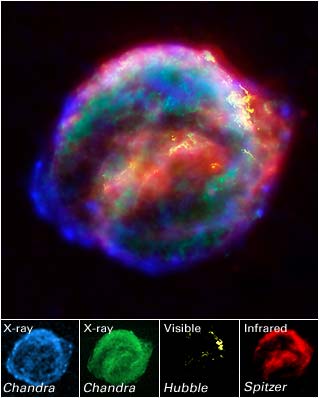
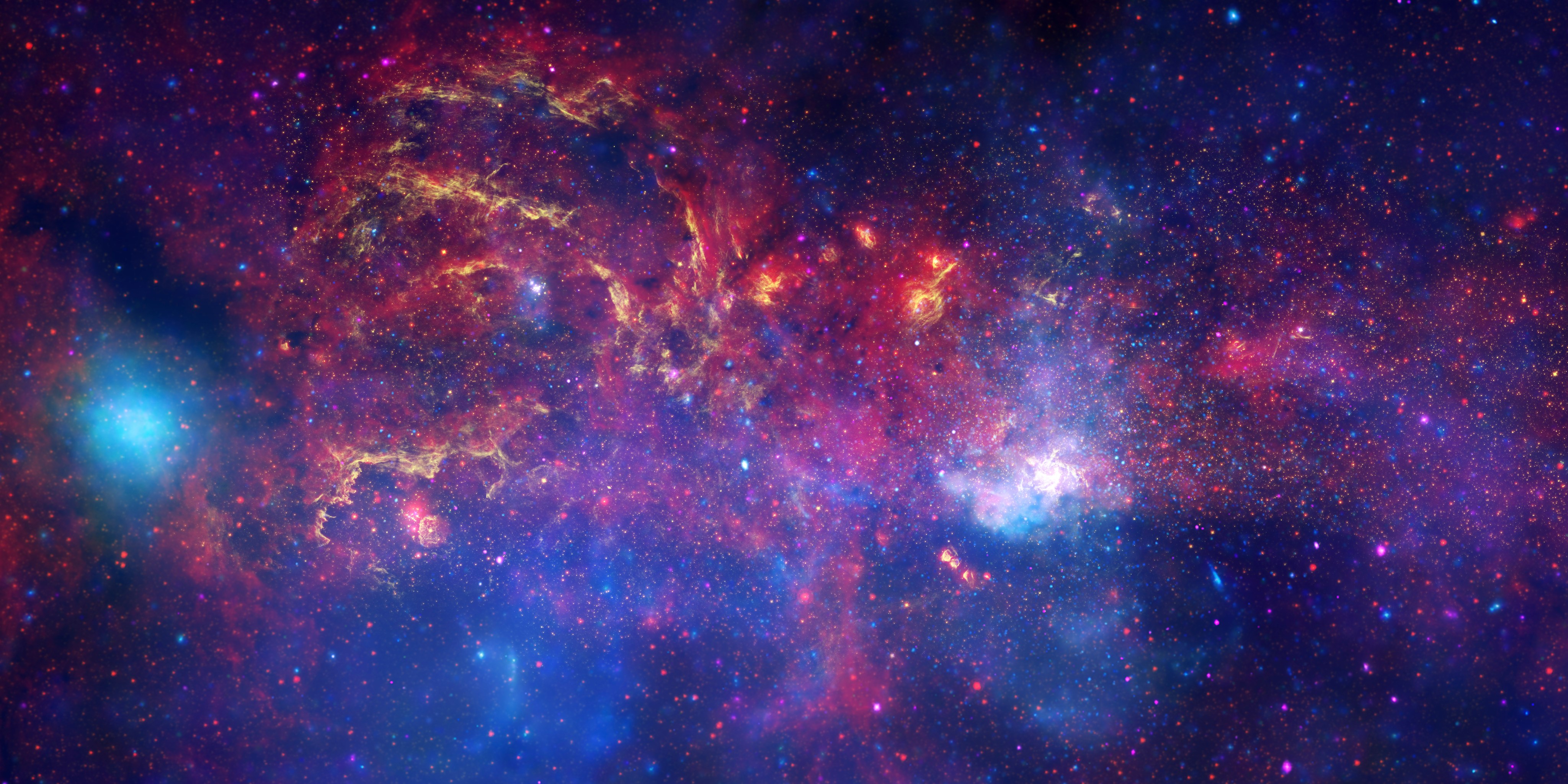
General-Purpose Observatories
The Hubble mission has formal agreements with other general-purpose, space-based observatories to award time for joint programs where Hubble science is the prime science, but multi-wavelength observations from another observatory are critical to the scientific goals of the proposal. The agreements also support the opposite direction, where Hubble is the ancillary observatory. In these scenarios, the two observatories may award time (up to an agreed upon limit) on the other to ensure that all the pertinent data are captured.
Hubble’s primary observing partners naturally include its NASA sibling space missions like Webb, Chandra, TESS, and the now retired Spitzer Space Telescope. In fact, a special program for preparatory observations was executed for several years to support the Webb mission before it launched. These observations provided potential targets, initial multi-wavelength data, and other science for Webb to further explore when it came online. Hubble also has collaborative agreements with the European Space Agency for cooperative time on their X-ray telescope, XMM-Newton. Combining data from each of these telescopes lets us see objects in X-ray, ultraviolet, visible, and infrared light.
Hubble data are also combined with ground-based data collected by observatories that look at wavelengths outside of Hubble’s sensitivity range. Collaborative agreements exist with the NRAO and NOIRLab's Gemini Observatories. But Hubble data are often used with other ground-based observatories to advance science including the Laser Interferometer Gravitational-Wave Observatory (LIGO), the W. M. Keck Observatory, and others.
One of the highest priority ways Hubble will be working in complement with other observatories is in the study of some sources of gravitational waves. Hubble cannot detect gravitational waves (LIGO and other facilities can). But some sources of gravitational waves, such as merging neutron stars, also create visible explosions like kilonovae. Hubble can view the radiation from such explosions and therefore help characterize the source and impacts and products created from these events that also produce gravitational waves. We anticipate Hubble will be a major player in this “multi-messenger astronomy” in future years, providing important follow-up and complementary observations to gravitational wave detections from observatories like LIGO. Hubble has already demonstrated this, by highlighting the location and radiation and aftermath composition of a kilonova explosion in 2017 that was incited by a merger of neutron stars, a source of gravitational waves detected by LIGO.

Solar System Probes
NASA’s program to explore the solar system includes spacecraft that have studied the inner and outer solar system and have traveled well beyond the realm of the Sun's influence. Unlike Hubble, these probes leave Earth’s orbit and travel to the solar system object of interest. At times, it is advantageous to use Hubble to help find targets for these probes, or do collaborative observations of a specific event.
A prime example of such a collaboration involved NASA’s New Horizons spacecraft. Hubble observed Pluto before New Horizons made its flyby of the dwarf planet, capturing the first details of its surface and discovering four new moons around Pluto. Hubble's Pluto observations shaped the observing plan of New Horizons by helping the mission chart its flyby and capture images of these moons and avoid collisions with these same objects. Hubble also looked for and identified targets that New Horizons could visit after its flyby of Pluto.
Hubble similarly helped NASA's LUCY mission by studying the composition of Trojan asteroids. Because Hubble can detect small, dim satellites orbiting larger asteroids — something an Earth-bound telescope might miss — the LUCY team also used Hubble to search for Trojan satellites. Hubble observations revealed a small satellite, subsequently named Queta, orbiting the asteroid Eurybates. Hubble's observations gave the LUCY team the opportunity to better plan their exploration of these Trojan asteroids.

NASA’s DAWN mission also benefited from Hubble observations. Hubble captured images of the large asteroids Vesta and Ceres that helped scientists refine their plans for the Dawn spacecraft's rendezvous with these two large asteroids.
Spacecraft Impactors
More recently, Hubble worked with NASA's Double Asteroid Redirection Test (DART), the first mission to slam an object into an asteroid and alter its motion in space. Hubble and Webb both captured detailed views of the DART impact. After the impact, Hubble continued to monitor the asteroid and provided information about the impact's debris field.
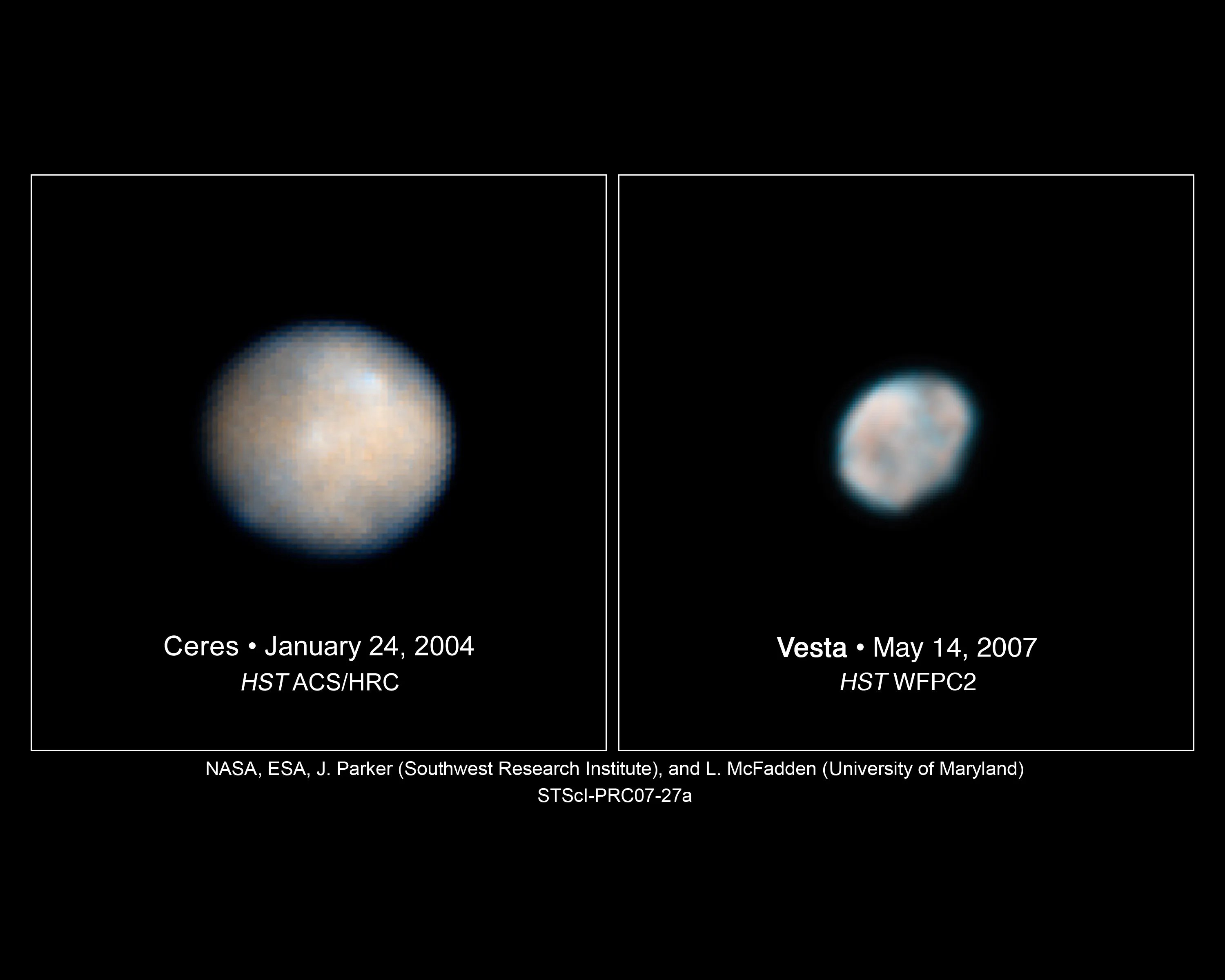
This was not the first time Hubble observed a spacecraft collision. In 2005, Hubble captured images and spectra of a collision with a comet. The Deep Impact Mission released a penetrator to collide with the nucleus of Comet Tempel 1 to determine the make-up of a comet. Hubble supported with images and spectra of the aftermath.
Planetary Probes
Beyond missions to the smaller, rocky worlds of our solar system, Hubble's observations supplement missions to the outer gas giant planets like NASA's Juno and the retired Cassini-Huygens missions as well.
Hubble regularly images the outer planets (Jupiter, Saturn, Uranus, and Neptune) to track changes in each planet's atmosphere over time. Some of its Jupiter observations are also designed to build upon data collected by the Juno spacecraft in its mission to study this large gas giant. Joint observations are planned such that Hubble takes data at the same time as Juno to get different perspectives of phenomena on that planet.
Hubble observations, combined with those from the Gemini Observatory and the Juno spacecraft, have helped scientists interpret cloud structures and atmospheric circulation on Jupiter. The collective data allows researchers to see that lightning flashes are clustered in turbulent regions that hold deep water clouds where moist air is rising to form tall convective towers similar to cumulonimbus clouds (thunderheads) on Earth. The combined observations were used to map the cloud structure in three dimensions and infer details of Jupiter's atmospheric circulation.
While Cassini traveled toward a July 1, 2004 rendezvous with Saturn, Hubble captured stunning images of this ethereal planet and its rings. The Hubble images were so sharp that many individual ringlets were visible in Saturn's ring plane. At the time the images were taken, Hubble was nearly a billion miles farther from Saturn than Cassini, which was still approaching the planet. Yet, Hubble's exquisite optics, coupled with the high resolution of its Advanced Camera for Surveys, allowed it to take pictures of Saturn that were nearly as sharp as Cassini's wide-angle views of the full planet. Those images marked the first time astronomers were able to compare views of Saturn with equal sharpness from two very different perspectives.
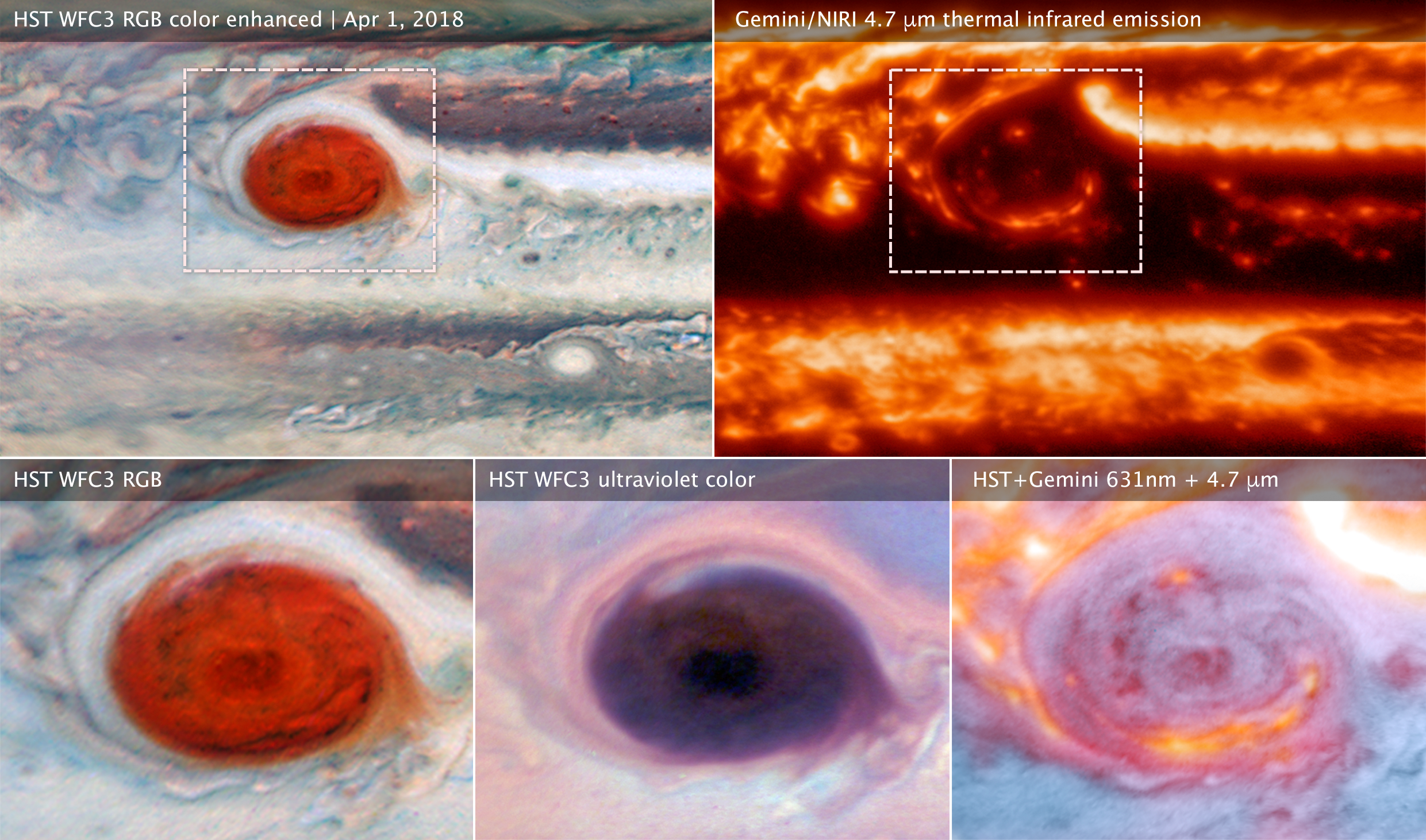
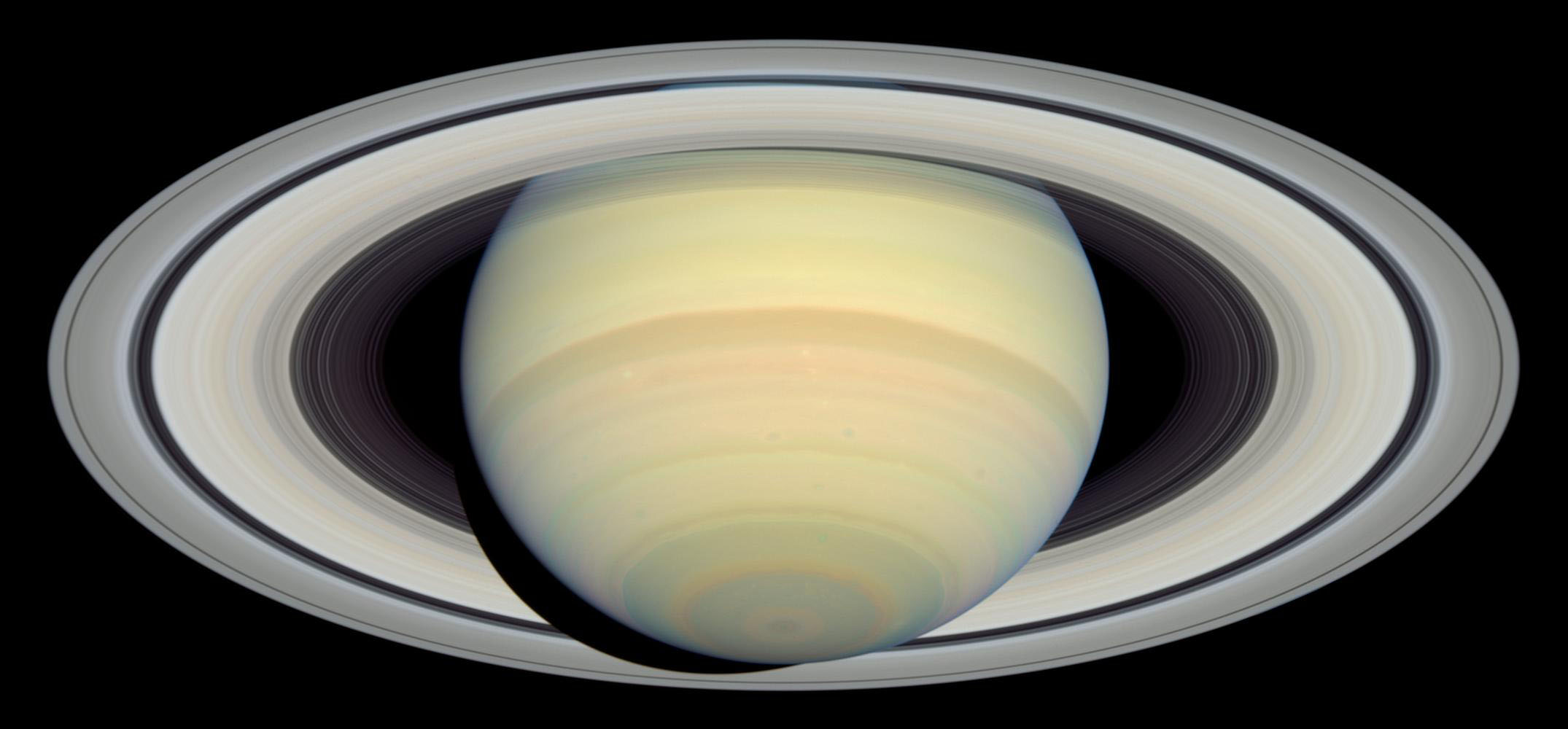
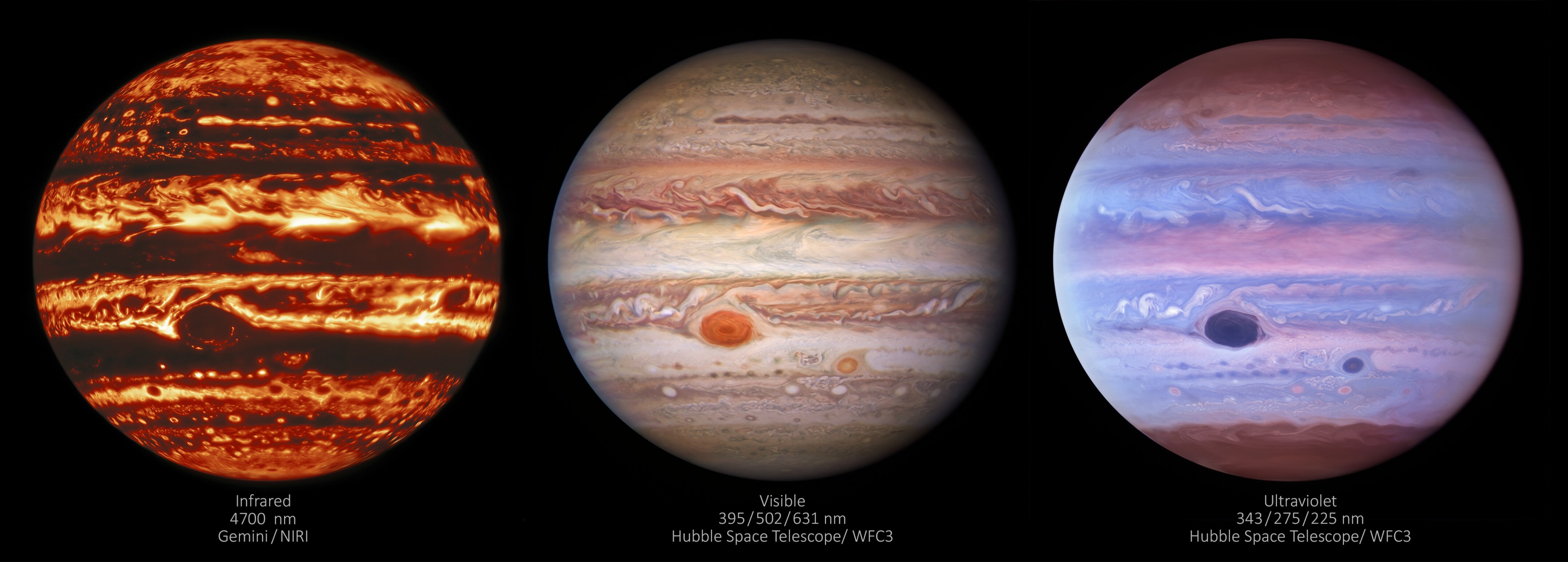
Planet Hunters
Hubble regularly teams up with ground-based and space-based telescopes to better understand the composition, environment, and formation of planets beyond those in our solar system, called extrasolar planets or exoplanets. Building on exoplanet discoveries made by TESS and the retired Kepler spacecraft, astronomers use Hubble to take measurements of the atmospheric composition of these worlds. Its observations have identified atmospheres that contain sodium, oxygen, carbon, hydrogen, carbon dioxide, methane, helium, and water vapor. These Hubble observations demonstrate that we can detect and measure the basic organic components for life on planets orbiting other stars.

In the age of multiwavelength and multi-messenger astronomy, Hubble's sensitivity to ultraviolet, visible, and infrared wavelengths makes it an invaluable tool for researchers trying to unravel the mysteries of the universe. Hubble's three decades of operation also provides researchers with a wealth of data taken over many years. By comparing Hubble's older observations with newer ones from Hubble and other observatories, astronomers can better understand how an object, like Jupiter's atmosphere, changes over time. As new space and ground-based telescopes continue to come online, Hubble's current observations and extensive archive will continue to expand our understanding of the universe.

